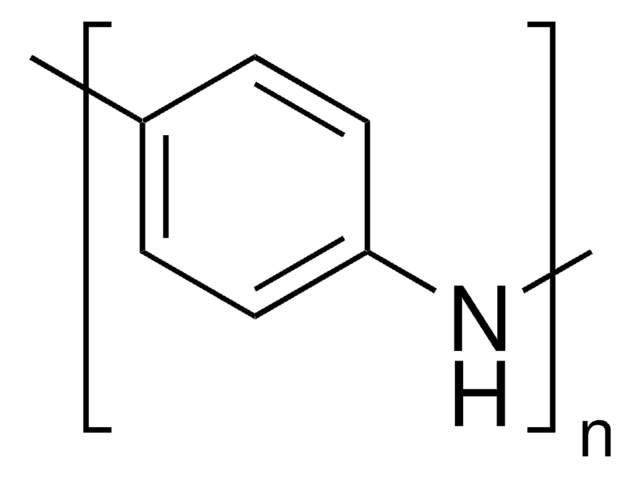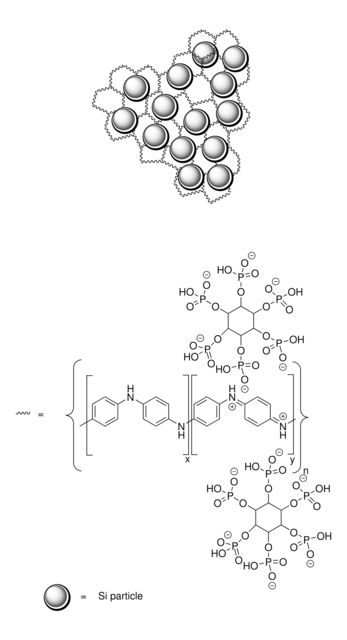おすすめの製品
関連するカテゴリー
アプリケーション
High surface area conducting polyaniline can be used as the active semiconductor layer in Organic Field-Effect Transistors (OFET) devices. In OPV devices, high surface area conducting polyaniline can be incorporated as a conductive additive or component. By adding the material to the active layer materials or the charge transport layers, it can enhance the electrical conductivity and facilitate charge extraction, contributing to improved device performance.
This polyaniline product is crosslinked by a dopant molecule - phytic acid, to form a highly porous 3D nanostructure. It is intrinsically conductive and has large open channels advantageous for sensing and energy storage applications. These open micro/nano channels promote the transport of electrons and facilitates the diffusion of ions, and small molecules. Additionally, pyrolyzing this polyaniline could yield highly porous 3D cross-linked graphitic carbon for a broad range of applications.
保管分類コード
11 - Combustible Solids
WGK
WGK 3
引火点(°F)
Not applicable
引火点(℃)
Not applicable
適用法令
試験研究用途を考慮した関連法令を主に挙げております。化学物質以外については、一部の情報のみ提供しています。 製品を安全かつ合法的に使用することは、使用者の義務です。最新情報により修正される場合があります。WEBの反映には時間を要することがあるため、適宜SDSをご参照ください。
Jan Code
912891-VAR:
912891-BULK:
912891-2G:
最新バージョンのいずれかを選択してください:
Jintao Zhang et al.
Nature nanotechnology, 10(5), 444-452 (2015-04-08)
The oxygen reduction reaction (ORR) and oxygen evolution reaction (OER) are traditionally carried out with noble metals (such as Pt) and metal oxides (such as RuO₂ and MnO₂) as catalysts, respectively. However, these metal-based catalysts often suffer from multiple disadvantages
3D nanostructured conductive polymer hydrogels for high-performance electrochemical devices
Zhao Y, et al.
Energy & Environmental Science, 6, 2856-2870 (2013)
Conducting-polymer-based supercapacitor devices and electrodes
Snook G A, et al.
Journal of Power Sources, 196, 1-12 (2011)
Lijia Pan et al.
Proceedings of the National Academy of Sciences of the United States of America, 109(24), 9287-9292 (2012-05-31)
Conducting polymer hydrogels represent a unique class of materials that synergizes the advantageous features of hydrogels and organic conductors and have been used in many applications such as bioelectronics and energy storage devices. They are often synthesized by polymerizing conductive
John W F To et al.
ACS central science, 1(2), 68-76 (2016-05-11)
Porous graphitic carbon is essential for many applications such as energy storage devices, catalysts, and sorbents. However, current graphitic carbons are limited by low conductivity, low surface area, and ineffective pore structure. Here we report a scalable synthesis of porous
ライフサイエンス、有機合成、材料科学、クロマトグラフィー、分析など、あらゆる分野の研究に経験のあるメンバーがおります。.
製品に関するお問い合わせはこちら(テクニカルサービス)



